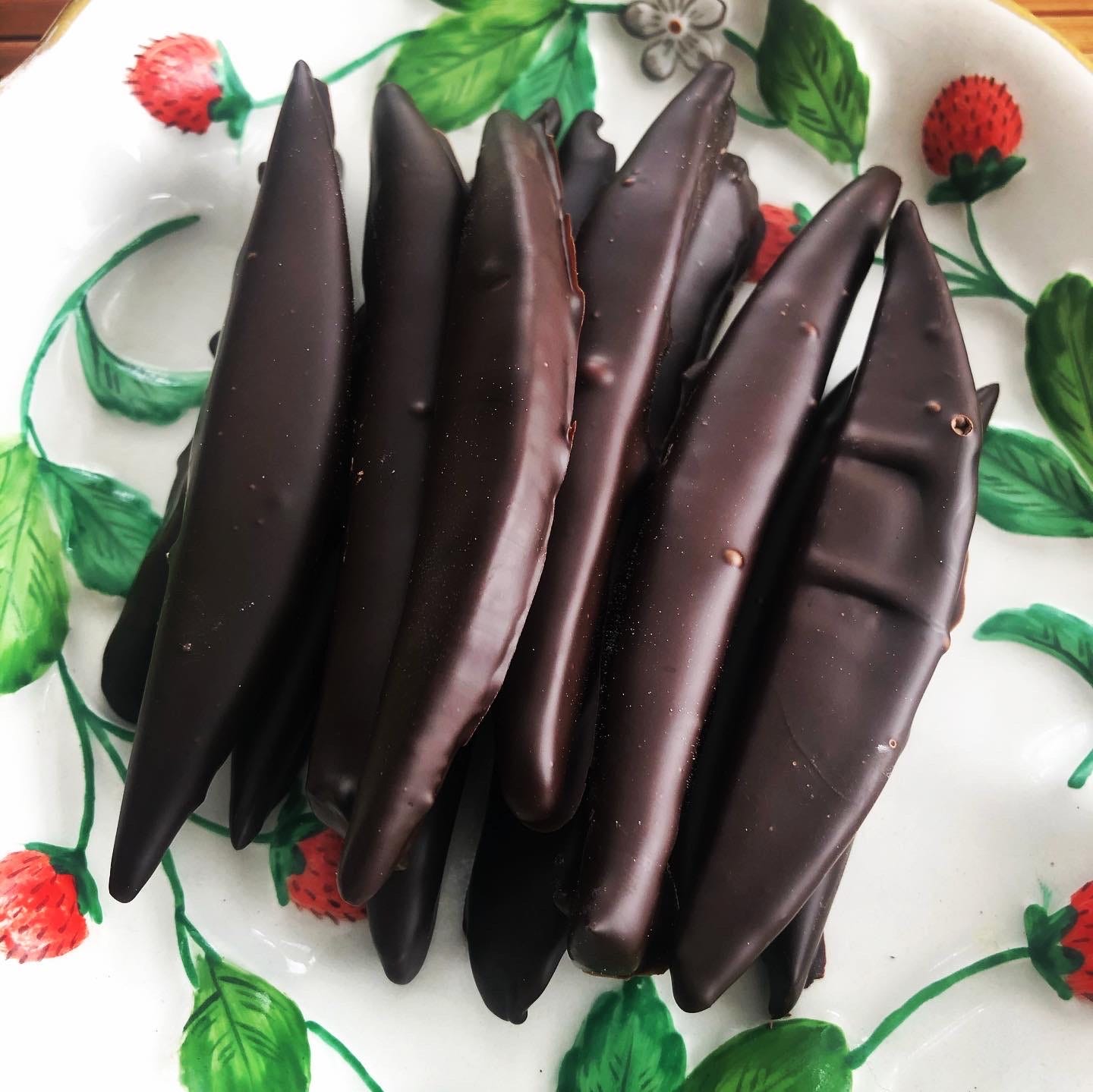I have many weaknesses in the food world, but when it comes to chocolate perhaps my greatest weakness is chocolate-coated candied orange peel. I simply adore them and buy them whenever I visit a new chocolate shop.
The beauty of candied orange peels (orangettes in French) is that they are made with an ingredient we tend to ditch. But once submerged in sugar syrup over several days, citrus peel goes from tough and bitter to melting and sweet. From there I like to dip them in chocolate or use the candied peel in a myriad of ways, especially over the holidays when many a cakes, dessert, sweet bread, candy, cookie and tart calls for candied peel.
I first made candied orange peel in my chocolate classes back in 1990. You will find many recipes that can be completed in a day, but the real and best candied orange peels are made over several. This recipe takes four days. That’s long, I admit, but the resulting orange peels are the real-deal aiguillettes chocolatiers use to stock their shelves. And though it takes a few days, there’s little work involved and certainly nothing difficult.

The process of candying any kind of fruit or peel (vegetables, such as angelica stems, can be candied as well) is fascinating and can take days to several months depending on the size of the fruit. In the case of citrus peel — most often citron, lemon, grapefruit or orange — the peel is either blanched or soaked in cold water to remove the bitterness, and then placed in hot sugar syrup which absorbs the moisture from within the fruit and gradually begins to preserve it. This process is called “osmotic dehydration,” where the water content of the fruit is removed and replaced with sugar.
Originating in about the 14th century, this process not only sweetens the peel but allows the fruit to remain edible for up to a year as the main cause of perishability in fruit is its high water content. So candied peels, when well made and stored, can last you for a good long time.
It’s essential when choosing the fruit to select oranges with a thick and sturdy peel. For this reason, avoid candying thin-skinned clementine peels using this method, though they can be made into the spindly zests used for decoration, which are easily made by blanching them first and then boiling them in sugar syrup until they’re softened throughout. But that’s not what we’re making here. These zests are meant for chopping or coating, or decorating in more bold patterns.
This recipe will take four days from beginning to end, so you can just make it for the Christmas season if you get going. And one you’ve tried orange, have a go at lemon or grapefruit, both absolutely scrumptious when coated in milk or dark chocolate.
Keep reading with a 7-day free trial
Subscribe to Lick my Plate to keep reading this post and get 7 days of free access to the full post archives.





